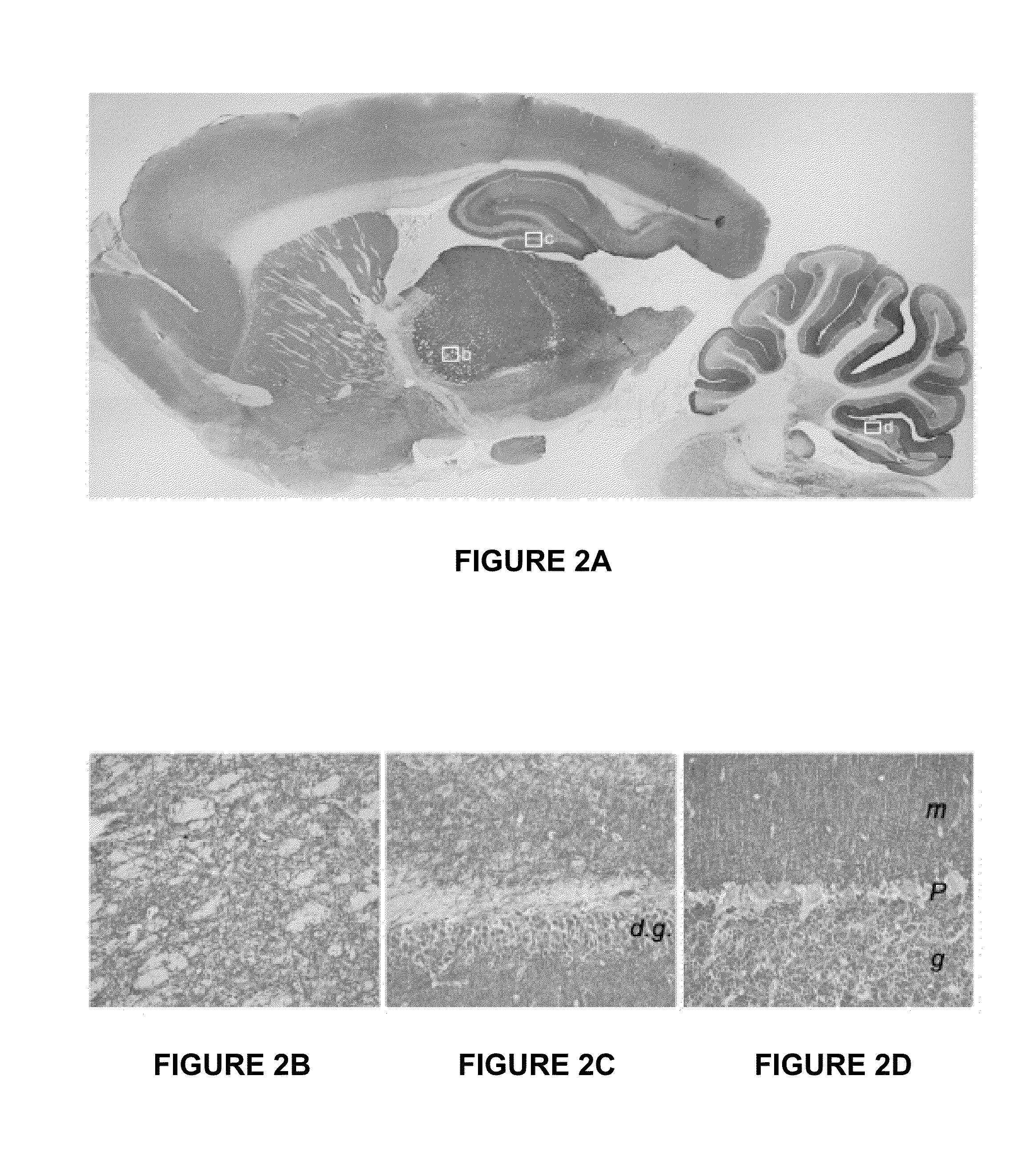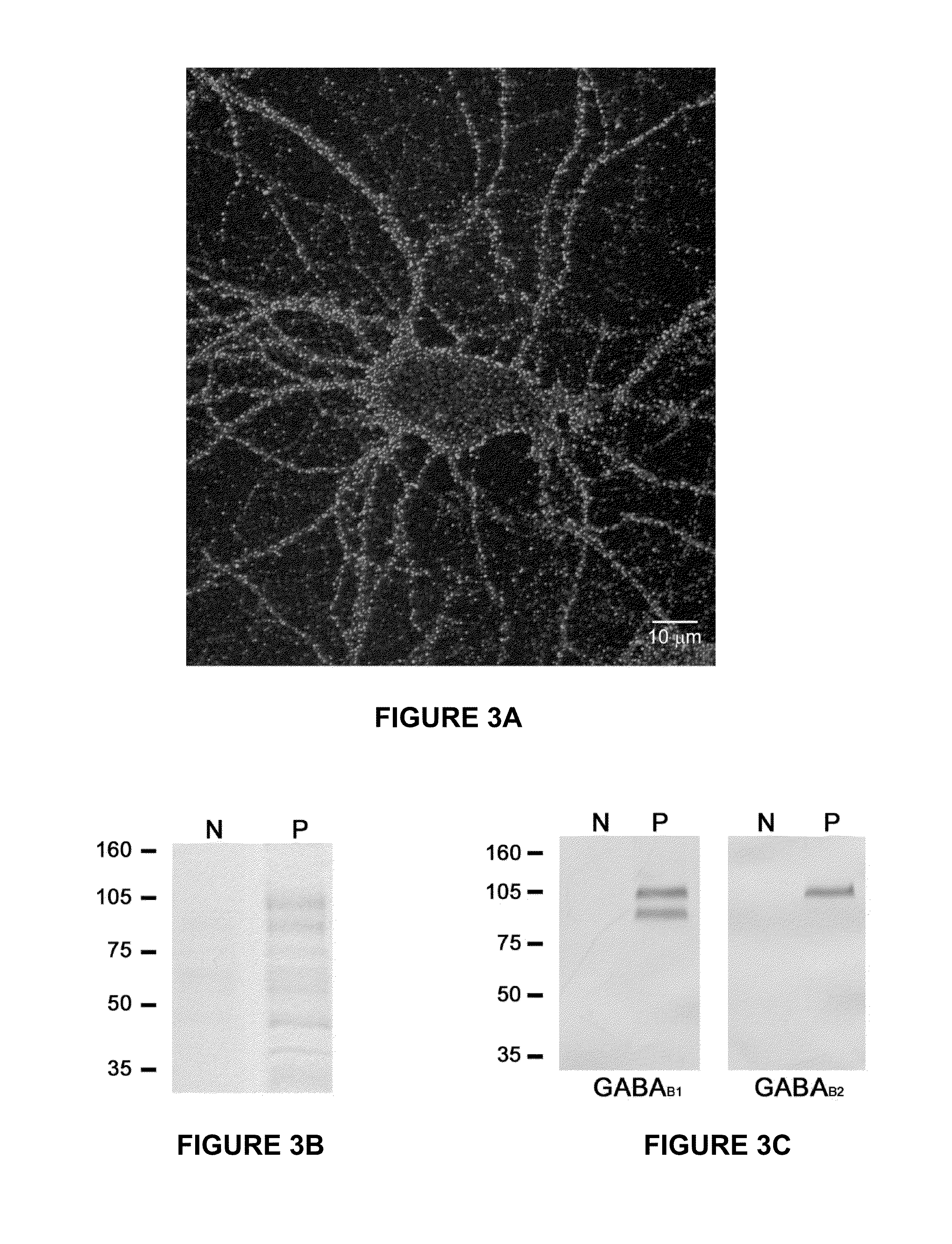Methods for diagnosing and treating encephalitis or epilepsy
a technology for encephalitis and epilepsy, applied in the direction of immunological disorders, instruments, antibody medical ingredients, etc., can solve the problems of seizures, memory, learning, behavior, similar symptoms, severe alterations,
- Summary
- Abstract
- Description
- Claims
- Application Information
AI Technical Summary
Benefits of technology
Problems solved by technology
Method used
Image
Examples
example 1
The GABAB Rece s for is a Novel Autoantigen of Severe Limbic Encephalitis with Prominent Seizures
Materials and Methods
[0094]Patients and Controls. The inventors of the instant application studied 410 patients for encephalitis suspected to be paraneoplastic or immune mediated against neuronal cell surface antigens. Antibodies were identified in 357: 275 had antibodies to the NR1 subunit of the NMDAR, 27 voltage-gated potassium channels (VGKC), 19 glutamic acid decarboxylase (GAD), 15 G1uR1 / 2 subunits of the AMPAR, 11 Ma2, 8 HuD, and 2 against CRMP5. Of the remaining 53 patients, 15 had serum or CSF antibodies against neuronal cell surface antigens predominantly visible in the neuropil of rat brain, all showing a similar immunostaining. These features and the dramatic response to treatment of the index case (patient # 1) focused the current study in these 15 patients. Information was obtained by the authors or provided by referring physicians. CSF or serum from 104 patients, including...
example 2
GABAB Receptor Antibodies in Limbic Encephalitis and Anti-GAD-Associated Neurological Disorders
[0121]We analyzed the frequency of GABABR-ab in 147 patients with LE or neurological syndromes associated with GAD-ab. We examined the presence of GABABR-ab in 70 LE patients (33 paraneoplastic with onconeural antibodies, 18 paraneoplastic without onconeural antibodies, and 19 idiopathic with either GAD-abor seronegative), and 77 patients with GAD-ab-associated neurological syndromes other than LE (29 stiff- person syndrome (SPS), 28 cerebellar ataxia, 14 epilepsy, and 6 with diverse paraneoplastic neurological syndromes). GABABR-ab were analyzed in stored samples of serum or CSF by indirect immunofluorescence on HEK293 cells transfected with GABAB1 and GABAB2 receptor subunits.
[0122]GABABR-ab were detected in 10 of the 70 LE patients (14%). Eight had SCLC and two were idiopathic. One of the eight LE patients with SCLC had an additional onconeural antibody (Hu) and two GAD-ab. GABABR-ab we...
PUM
| Property | Measurement | Unit |
|---|---|---|
| pH | aaaaa | aaaaa |
| pH | aaaaa | aaaaa |
| concentration | aaaaa | aaaaa |
Abstract
Description
Claims
Application Information
 Login to View More
Login to View More - R&D
- Intellectual Property
- Life Sciences
- Materials
- Tech Scout
- Unparalleled Data Quality
- Higher Quality Content
- 60% Fewer Hallucinations
Browse by: Latest US Patents, China's latest patents, Technical Efficacy Thesaurus, Application Domain, Technology Topic, Popular Technical Reports.
© 2025 PatSnap. All rights reserved.Legal|Privacy policy|Modern Slavery Act Transparency Statement|Sitemap|About US| Contact US: help@patsnap.com



